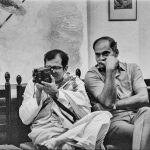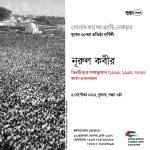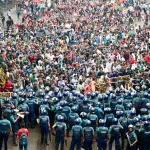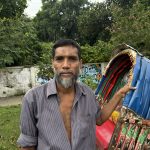

-
সেনাবাহিনী বিষয়ে আমার বক্তব্য খন্ডিতভাবে প্রচার করে বিভ্রান্তির সুযোগ তৈরি করা হচ্ছে
সম্প্রতি বাংলাদেশ আওয়ামী লীগ তথ্য প্রযুক্তি বিষয়ক নির্বাচন পরিচালনা কমিটি…
-
-
-
Moving opening ceremony of "Kalpana's Warriors"
Remarkable: Noam Chomsky Absolutely stunning: Jess Worth. New Internationalist Magazine…
-
Kalpana's Warriors
Remarkable: Noam Chomsky Absolutely stunning: Jess Worth. New Internationalist Magazine…
-
Deutsche Welle interviews Shahidul Alam on "Searching for Kalpana Chakma" show (Bangla)
Military’s sole role has been repression ???????? ??????????? ??????? ???…
-
Live clips from opening of "Searching for Kalpana Chakma" at Drik Gallery
The opening was very moving and there was a great…
-
-
Shahidul Alam: Interview on BBC Asia News Network
Interview on 22nd February 2013, where he talks about the…
-
Kalpana's Family: Living Under State Surveillance
Subscribe to ShahidulNews by Saydia Gulrukh ?Do the words of…
-
Ethnically Singular Nationalist Narratives
`Warring factions’ in the CHT By Rahnuma Ahmed In homage…
-
Latest Posts
Categories
- 1971
- Afghanistan
- Arts
- Bangladesh
- Capitalism
- Caretaker government
- Censorship
- China
- Chittagong Hill Tracts
- Chobi Mela
- Chobi Mela VII
- Coal
- Colonialism
- Consortium government
- Corruption
- COVID 19
- Crossfire
- culture
- Current News Photos
- Democracy
- development
- Disappearances
- disasters
- Drik and its initiatives
- Drik DNA
- Drik's Network Partners
- Drugs
- economy
- Education
- Elections
- Energy
- environment
- exploitation
- features
- Film
- Garments
- Gas
- Gender
- Genocide
- Global Issues
- Governance
- guimet
- Health
- History
- Human rights
- Humour
- Immigration
- Imperialism
- India
- Interesting sites
- Interviews
- Interviews and Features
- Islam
- Kalpana Chakma
- Killings
- Law
- lectures
- literature
- Major Features on Bangladesh
- Majority World
- media
- Media issues
- Migration
- Military
- mining
- Mir Jafar
- Monarchy
- Music
- My Photo Essays
- Nepal
- New Age
- New Media
- News Archives
- News Photo Archives
- Nuclear
- Occupation
- Oil
- Pakistan
- Partition
- Pathshala
- People
- Personal
- Photography
- Photojournalism
- Photojournalism issues
- photojournalist
- politics
- Poverty
- RAB
- Rahnuma Ahmed
- Religion
- Resistance
- Reviews
- Science
- security
- Shahidul Alam
- Sheikh Hasina
- short stories
- Sites of Drik and Pathshala photographers
- South Asia
- Southern Exposure
- Sports
- Sri Lanka
- surveillance
- Taliban
- Technology
- Terrorism
- Transport
- UK
- Uncategorized
- USA
- Violence
- War
- war on terror
- Water
- World
Tags
1971 Art Arts Bangladesh book censorship Chobi Mela Chobi Mela VII culture Death democracy Dhaka Drik education Elections exhibition Festival garments Gaza Genocide Governance history Human rights India Israel Journalism Law literature Majority World media Military Pakistan Palestine Pathshala Photography Photojournalism politics Rahnuma Ahmed resistance Shahidul Alam USA Violence Visual Arts War War Crimes



